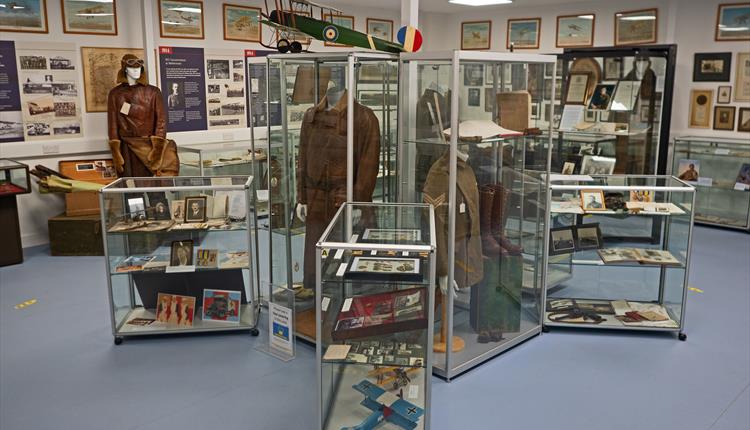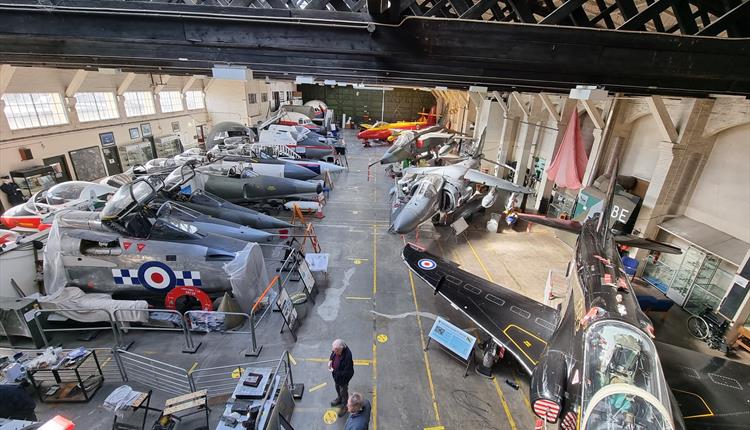Nestled in Old Sarum, just north of Salisbury in Wiltshire, lies one of the UK’s most fascinating yet lesser-known aviation museums: The Boscombe Down Aviation Collection (BDAC). Unlike the larger, more commercial air museums, BDAC offers a unique, hands-on experience that brings visitors closer to aviation history than they might ever expect.
From historic cockpits and engines to rare aircraft and interactive exhibits, the collection provides not only a glimpse into the technology of flight but also the human stories behind it. For aviation buffs, engineers, students, or simply curious visitors, this museum is a treasure trove of knowledge, heritage, and inspiration.

A Brief History of Boscombe Down
To understand the museum, it’s worth appreciating the historic significance of Boscombe Down itself. Established in 1917 during the First World War, Boscombe Down became synonymous with aircraft testing and evaluation. It was home to the Aeroplane and Armament Experimental Establishment (A&AEE) and later played a crucial role in testing aircraft, weapons, and systems for the Royal Air Force and Ministry of Defence.
Many of Britain’s most iconic aircraft—including the Spitfire, Lightning, Harrier, and Tornado—underwent testing at Boscombe Down. The site was a hub of innovation and secrecy, where engineers and test pilots worked at the cutting edge of aviation technology.
The Boscombe Down Aviation Collection, though not located at the actual military airfield, was founded to preserve and showcase this rich history. Its relocation to Old Sarum Airfield, one of the oldest continuously operating airfields in the UK, makes it even more atmospheric. Old Sarum itself dates back to 1917 and was once a training ground for pilots in both World Wars, adding layers of history to the visitor experience.
What Makes the Collection Special
Unlike many museums where exhibits are roped off or hidden behind glass, the BDAC encourages direct interaction. Visitors can sit in cockpits, handle controls, and truly imagine themselves as pilots. For children and adults alike, this transforms the experience from passive observation into active participation.
Aircraft and Cockpits
The star attractions are, of course, the aircraft themselves. The collection includes both complete aircraft and cockpit sections, many of which visitors can climb into. Some notable highlights include:
- English Electric Lightning – Britain’s legendary Cold War interceptor, famed for its incredible speed and climb rate. Sitting in the cockpit offers a real sense of what it must have been like to fly this supersonic icon.
- Harrier Jump Jet – A marvel of engineering, the Harrier was the first operational aircraft capable of vertical/short take-off and landing (V/STOL). BDAC’s example allows you to study its unique design up close.
- Hawker Hunter – One of the most beautiful jet fighters ever built, with a long service career and a reputation for reliability.
- Tornado GR1 cockpit – A vital part of Britain’s air power during the late 20th century, offering visitors a seat in a jet that saw active service in the Gulf War.
- Jaguar GR3 – Another Cold War-era strike aircraft that showcases Britain’s engineering excellence.
In addition to military jets, the museum houses training aircraft, helicopters, and experimental cockpits, each with its own story.
Engines and Equipment
The collection also features a wide range of aircraft engines, from early piston designs to modern jet turbines. These exhibits help visitors understand the technological leaps that made aviation progress possible.
There are also displays of ejector seats, weapons systems, flight suits, and avionics equipment—reminders of the many facets of aviation beyond the airframes themselves.
Hands-On Interaction
What sets BDAC apart is the opportunity to actually sit in multiple cockpits. Few museums allow this level of interaction. Whether you’re adjusting the controls of a Hunter or looking out from the canopy of a Lightning, the experience is immersive and unforgettable. For children, it sparks imagination; for adults, it’s often nostalgic or awe-inspiring.
Educational Value
The Boscombe Down Aviation Collection is not just a museum for enthusiasts; it is also an educational resource. Schools, colleges, and universities often use it as a learning platform for STEM (Science, Technology, Engineering, and Mathematics) subjects.
Students can gain insights into:
- Aerodynamics – by studying wing shapes, control surfaces, and aircraft design.
- Engineering – through engines, hydraulics, and materials used in aviation.
- History – understanding the role of aircraft in military and civilian life across the decades.
Guides and volunteers, many of whom have direct experience in aviation—whether as engineers, pilots, or ground crew—are eager to share their knowledge. Their enthusiasm makes the museum feel personal, not just educational.
The Role of Volunteers
One of the museum’s strengths lies in its dedicated team of volunteers. Many are retired service personnel or aviation professionals who bring firsthand knowledge and passion to the collection. They are often available to answer questions, tell stories, and explain the intricacies of the exhibits.
This personal touch adds a dimension rarely found in larger, more impersonal museums. For example, a volunteer might explain how a specific aircraft system worked or recount their own experience maintaining or flying a particular jet. This human connection makes history feel alive.
The Old Sarum Setting
The location at Old Sarum Airfield enhances the museum’s appeal. With its historic hangars and active general aviation community, the airfield provides an authentic backdrop. Visitors often see small aircraft taking off or landing during their visit, linking the history of flight to its present-day practice.
Old Sarum is itself a place of history beyond aviation. Nearby lies the Iron Age hillfort of Old Sarum, once a thriving settlement and later the site of a Norman castle and cathedral. A visit to the museum can easily be combined with exploring these ancient ruins, making it a day rich in history across millennia.
Events and Community Engagement
The Boscombe Down Aviation Collection regularly hosts events, open days, and educational activities. From classic car and aviation displays to talks and family days, the museum actively engages with its community. Special events often allow closer access to aircraft or feature guest speakers with unique insights into aviation history.
The collection also plays an important role in preserving not just machines but the stories of the people who built, maintained, and flew them. By recording oral histories and maintaining archives, BDAC ensures that future generations will understand the human side of aviation.
Visitor Experience
For those planning a visit, here’s what to expect:
- Accessibility: The museum is family-friendly and accessible, with exhibits arranged so that people of all ages can enjoy them.
- Interactivity: Expect to climb into cockpits, touch controls, and really explore. Photography is welcomed, making it great for enthusiasts who want to capture the moment.
- Time Needed: Allow at least 2–3 hours for a thorough visit, though aviation fans may find themselves spending much longer.
- Shop and Facilities: There is usually a small shop with aviation-themed gifts, books, and memorabilia.
Why Visit the Boscombe Down Aviation Collection?
So, why should you visit this museum instead of (or in addition to) larger institutions like the RAF Museum at Hendon or the Imperial War Museum at Duxford? The answer is intimacy and interactivity.
BDAC doesn’t overwhelm you with scale; instead, it invites you to step closer, climb inside, and imagine yourself as part of aviation history. It is not just about seeing the aircraft but experiencing them.
For aviation enthusiasts, the chance to sit in a Lightning or Harrier cockpit is worth the trip alone. For families, it offers an educational and fun day out. For anyone with even a passing interest in history, engineering, or flight, it is a chance to connect with a vital part of Britain’s story.
Final Thoughts
The Boscombe Down Aviation Collection may not be as famous as Duxford or Hendon, but in many ways, it offers something even more memorable: the chance to interact directly with aviation history. Its combination of aircraft, cockpits, engines, and personal stories provides an immersive experience that appeals to all ages.
Whether you’re a lifelong aviation enthusiast, a student curious about engineering, or simply someone looking for an unusual and rewarding day out, BDAC is a destination that delivers. It is more than a museum—it is a living tribute to the ingenuity, courage, and passion that have driven human flight for over a century.

